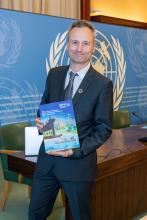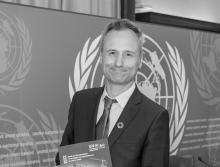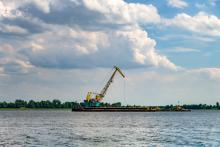
A UN report has warned of unsustainable extraction of sand in some parts of the world.
The "Sand and Sustainability" report was published by the
The report states that, while there is no global monitoring on the use of sand, cement production (which is highly correlated to the use of sand and gravels) is well reported. Tracking this data shows that the production of cement has tripled in the last two decades.
UNEP says that in the USA the amount of sand and gravels is almost exactly ten times the amount of cement and that, if this was extrapolated to the rest of the world, the
total sand and gravels used for construction only would be 41 billion tonnes per year.
Two thirds of global cement production occurs in China (58.5%) and India (6.6%) (United States Geological Survey [USGS], 2017; Gavriletea, 2017). China and India also lead in global infrastructure construction (Bagnasco et al., 2015; Global Construction 2030; World Economic Forum [WEF] 2019) as the two nations look to rapidly transition their populations out of poverty.
UNEP adds: "These materials [sand and gravels] are one of the largest resources extracted and traded by volume, yet it is one of the least regulated activities in many regions...Meanwhile, rivers, river deltas and coastlines are eroding, 'sand mafias' are thriving and demand continues to grow."
UNEP says that preventing or reducing damage to river, beach and marine ecosystems and social risks to workers and communities in sand extraction sites can be achieved through some already existing solutions.
It adds that these include avoiding consumption through reducing over-building and over-design, using recycled and alternative materials to sand in the construction sector, and reducing impacts through the implementation of existing standards and best practices.
"Sand is only a smaller part of the total demand for aggregates," the UEPG said in a statement. "Aggregates are crushed rock, gravel, sand, marine aggregates, recycled aggregates and manufactured aggregates."
It adds that the situation in the
The European association said that it has a taskforce on better implementation and regulatory enforcement to monitor the application EU legislation.
It added: "The European Commission has several mechanism to ensure the protection of environment such as the Environmental Implementation Review (EIR), funding of innovative environmental projects (LIFE & Horizon 2020) and promotes the partnership with industry (EU Business & Biodiversity Platform)."
UEPG said that it is supporting all these mechanisms and is also an active member of the European Commission Coordination Group on Biodiversity and Nature (CGBN).








